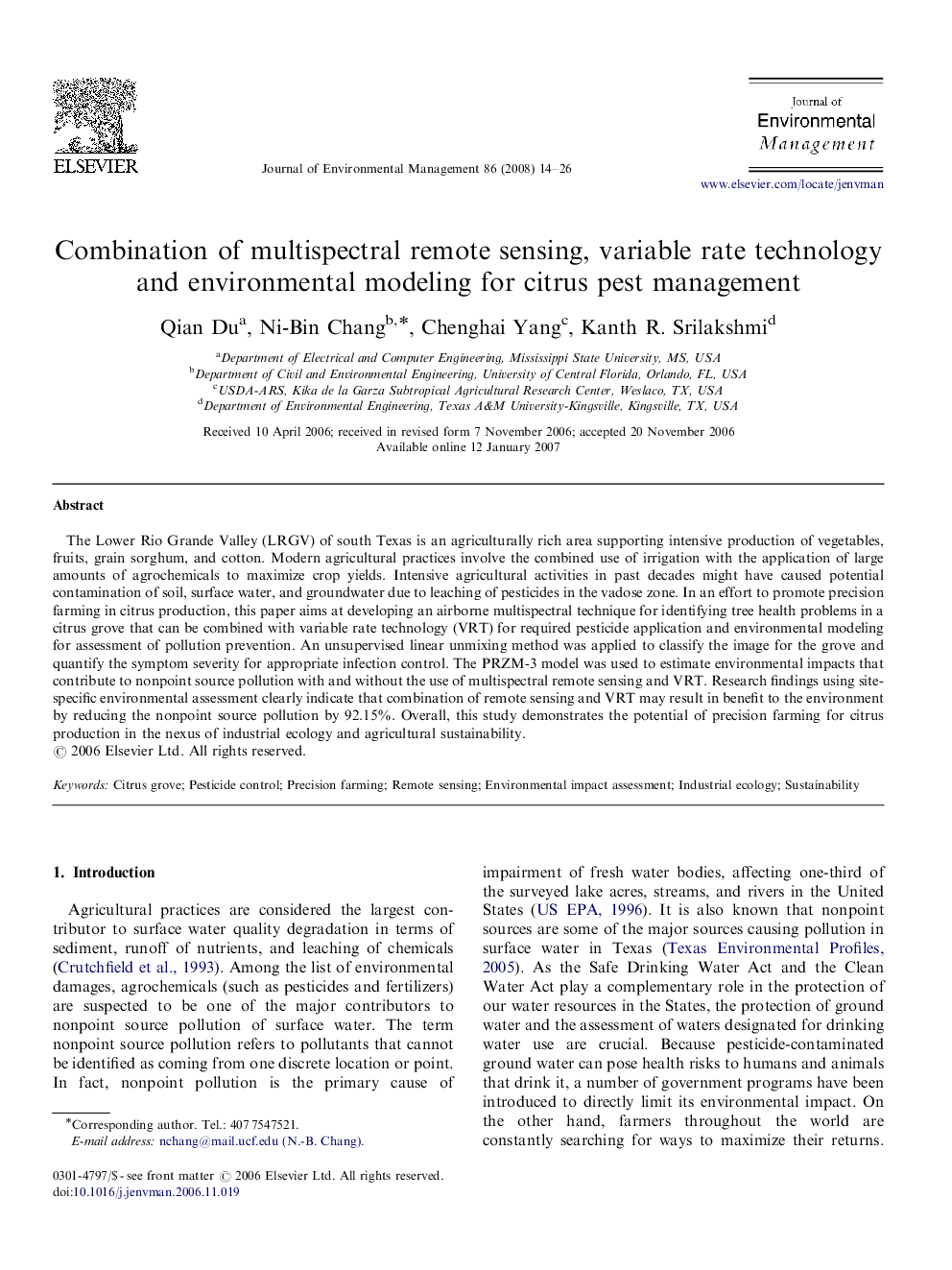| Article ID | Journal | Published Year | Pages | File Type |
|---|---|---|---|---|
| 1058360 | Journal of Environmental Management | 2008 | 13 Pages |
The Lower Rio Grande Valley (LRGV) of south Texas is an agriculturally rich area supporting intensive production of vegetables, fruits, grain sorghum, and cotton. Modern agricultural practices involve the combined use of irrigation with the application of large amounts of agrochemicals to maximize crop yields. Intensive agricultural activities in past decades might have caused potential contamination of soil, surface water, and groundwater due to leaching of pesticides in the vadose zone. In an effort to promote precision farming in citrus production, this paper aims at developing an airborne multispectral technique for identifying tree health problems in a citrus grove that can be combined with variable rate technology (VRT) for required pesticide application and environmental modeling for assessment of pollution prevention. An unsupervised linear unmixing method was applied to classify the image for the grove and quantify the symptom severity for appropriate infection control. The PRZM-3 model was used to estimate environmental impacts that contribute to nonpoint source pollution with and without the use of multispectral remote sensing and VRT. Research findings using site-specific environmental assessment clearly indicate that combination of remote sensing and VRT may result in benefit to the environment by reducing the nonpoint source pollution by 92.15%. Overall, this study demonstrates the potential of precision farming for citrus production in the nexus of industrial ecology and agricultural sustainability.
